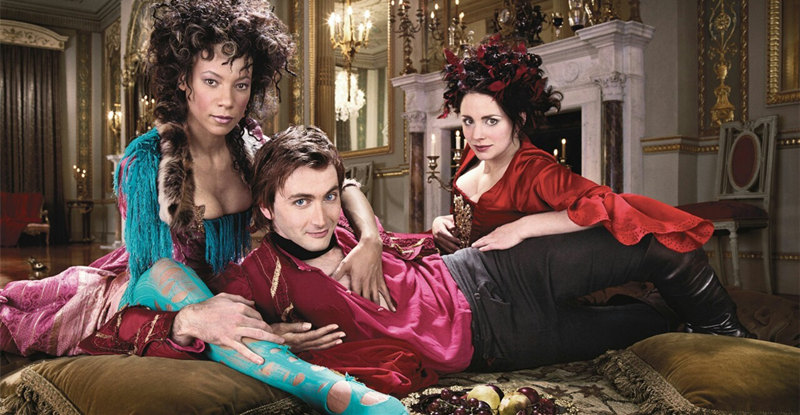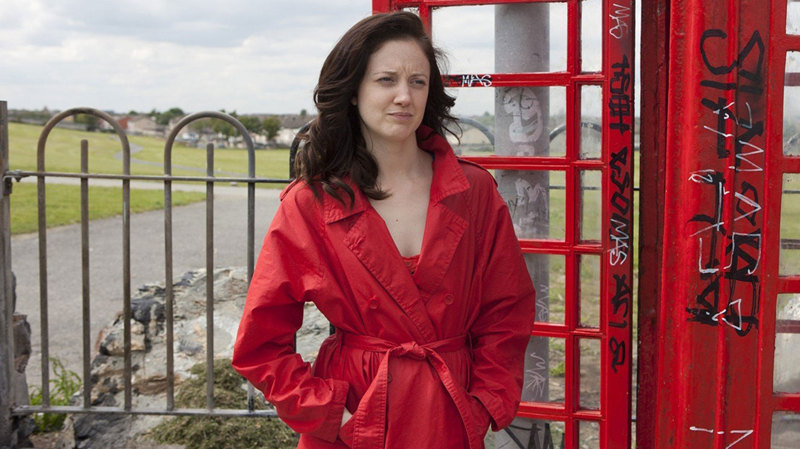The first thing you’re probably going to ask is, Didn’t Disney just release this movie on DVD? Yes, there was a 25th Anniversary Edition just a few years back. But a whole new generation of kids has sprung up in the meantime. Besides, it’s always nice watching this restored and remastered movie again, child or adult, and it’s always nice, anytime, to renew one’s acquaintance with A.A. Milne’s delightful characters.
Since Disney’s first animated “Pooh” short subjects back in the mid 1960s, the studio has been having a field day with Milne’s classic children’s stories. This 1977 release, “The Many Adventures of Winnie the Pooh,” is actually a compilation of three of Disney’s Pooh short subjects, “Winnie the Pooh and the Honey Tree” (1966), “Winnie the Pooh and the Blustery Day” (1968), and “Winnie the Pooh and Tigger, Too” (1974). These were the first three Pooh stories that Disney adapted from Milne’s books, and the studio would not do a full-length rendering of a new Pooh tale for another twenty years, “Pooh’s Grand Adventure,” in 1997. It wasn’t quite the same without many of the old voices, though.
The Scots writer A.A. Milne (1882-1956) said it was his wife, Dorothy, and his son, Christopher Robin, who inspired him to write his four Pooh books. According to his biography, “The worldwide sales of the four books between 1924 and 1956 totalled about seven million. Amusingly, once sales passed a million, the publishers stopped counting!” However, and oddly enough, “He rarely read the stories to his son Christopher, preferring to amuse him with the works of P.G. Wodehouse, one of Milne’s favorite authors.” His son later wrote, “My father did not write the books for children. He didn’t write for any specific market; he knew nothing about marketing. He knew about me, he knew about himself, he knew about the Garrick Club–he was ignorant about anything else. Except, perhaps, about life.” Moreover, states the biography, “A.A. Milne didn’t write the stories and poems for children. He intended them for the child within us all.”
“Winnie the Pooh and the Honey Tree”
This was the first, and still among the best, of Disney’s adaptions of the stories. It begins in the bedroom of Christopher Robin, whose toys would populate the world of Pooh in the Hundred Acre Wood behind the house. Like most of the little stories, this one is brief and straightforward. Pooh, a character for whom thinking is a genuine chore, attempts to get to his favorite food, honey, from the top of a tree full of bees; and later he eats so much of the stuff at his friend Rabbit’s home that he gets stuck in the hole trying to leave.
The story begins slowly, but before long we realize how enchanting a tale it is, the characters exuding a sweet sort of Mr. Rogers appeal. There is never a hurry in the woods, never a sense that anything bad can happen that somebody, usually Christopher Robin, cannot correct, no fence that somebody cannot mend, no hurt feelings that somebody cannot fix.
As with the rest of the stories, a narrator reads the book aloud as the viewer reads along. It gives one the sense of participating in the book, an early interactive activity. And the film’s animation, too, is lovely, giving one the feeling of looking at the book’s illustrations in color.
Among the most important elements in the picture are the voice characterizations, something it has always been hard for the Disney studios to duplicate once the original actors passed away. Voicing Pooh is the wonderful Sterling Holloway, who in real life looked as gentle and naive as the little bear himself. The narrator is Sebastian Cabot, who brings a dignified gravitas to the proceedings. Ralph Wright is the grumpy donkey Eeyore; impish Howard Morris the gopher; Hal Smith the wise but garrulous Owl; Junius Matthews the friend, Rabbit; Barbara Luddy the mother Kangaroo, Kanga; and Clint Howard is Kanga’s young son, Roo.
Equally important, though, are the songs, music and lyrics by Richard and Robert Sherman, the same fellows who provided the music and lyrics to so many great Disney musical creations like “The Parent Trap,” “Mary Poppins,” “The Jungle Book,” “The Lion King,” and many more. The Pooh tunes are good songs, memorable songs, songs for children and adults, songs like the “Winnie the Pooh” theme, “Up, Down, Touch the Ground,” “Rumbly in My Tumbly,” and “Little Black Rain Cloud.”
Like the other Pooh adventures, this one touches the heart of young and old. 8/10
“Winnie the Pooh and the Blustery Day”
My favorite among all the Disney Pooh films, “Winnie the Pooh and the Blustery Day” introduces us to Tigger, the bouncy tiger, played in the best Bert Lahr, Cowardly Lion fashion by Paul Winchell. I’ve liked Winchell since his old days as a television ventriloquist entertaining me as a kid in the 1950s, so his voice was a double pleasure.
In this one the winds get the creatures of the woods in trouble, it being, you see, a “Winds-day.” Among other things, Piglet (John Fieldler) gets stuck on the end of a kite; well, Piglet IS the end of a kite. And there is always a hunny pot around for Pooh to pursue. The blustery day soon turns into a scary, blustery, rainy night, and it’s here that Pooh meets Tigger for the first time. A cute dream sequence complete the picture.
Notable songs include “The Wonderful Thing About Tiggers,” “Heffalumps and Woozles,” and “The Rain, Rain, Rain, Came Down, Down, Down.” What’s more, the animation is more brilliant than ever. 9/10
“Winnie the Pooh and Tigger, Too”
Tigger is so bouncy in this episode that his friends get annoyed with his behavior and decide to lose him the woods. Unlike the first two segments, however, this one is rather too action-oriented, missing some of the quaint, old-fashioned charisma of the first two. It concentrates more on what the characters are doing rather than on the interaction among them. Worse, it loses track of Pooh for long stretches, focusing on Tigger, instead. While, admittedly, Tigger is a cute, silly, robust character who is undoubtedly appealing to kids, I found him rather tiresome and longed for a return to the relative quiet of Pooh’s personality.
All good things must come to an end. “Oh, bother!” 6/10
While Disney’s later, full-length Pooh movie, “Pooh’s Grand Adventure,” looked better than anything the studio had done in a long time, these earlier Disney Pooh short subjects look quite nice, too. They have the look of the black-and-white, pen-and-ink drawings of the first Milne books, but, of course, the addition of color bring them further to life. The animators use details that are reminiscent of the books’ illustrations without actually trying to imitate them. I can’t imagine anyone being disappointed with the detail in the backgrounds or with the modest, unpretentious visual style of the character renditions.
As Milne’s biography indicates, Pooh obviously represents the child within us that we all try to hang onto, no matter what our age. He’s the friend who never deserts us, the feeling that no matter what happens, all is right with the world. It’s that engaging spirit that Disney’s “Many Adventures of Winnie the Pooh” tries to capture, and surely it reaches out and touches youngsters and adults alike.
Video:
The Disney engineers present the film in the aspect ratio of its original camera negative, 1.37:1, or as the keep case says, 1.33:1. Thanks to the cleaning, restoring, and digital remastering, it looks fresh and new. Colors are bright and deep, due to a high bit rate, and there is only a trace of grain or noise in the picture. “Blustery Day” seems the richest and lushest of the three short films, and none of them betrays any signs of age, scratches, lines, flecks, or fades.
Audio:
The Dolby Digital 5.1 audio does not have much to do in this film. In its favor, it is smooth and quiet and easy on the ear. On the minus side, it displays a very limited front-channel stereo spread, a limited frequency range and dynamics, and very little ambient bloom in the surrounds.
Extras:
For adults, the main attraction on this “Friendship Edition” will probably be the twenty-five-minute making-of featurette, “The Story Behind the Masterpiece.” Produced in 2002, it contains comments and reminiscences from many of the Disney artists, actors, and filmmakers who helped create the first Pooh adventures. Next is a music video, “The Winnie the Pooh” theme song, performed by Carly Simon. After that is a Winnie the Pooh art gallery; a sing along, “The Wonderful Thing About Tiggers”; a children’s game, “The 100 Acre Wood Challenge”; Pooh’s Pop-up Fun Facts; and a Disney storytime feature, “Pooh’s Shadow,” that children can read themselves or have read to them.
Then, if that weren’t enough, there are two bonus short subjects, the best of which is “Winnie the Pooh and a Day for Eeyore,” made in 1983, with the voices of Laurie Main as the narrator and Hal Smith as Pooh. The other bonus short, “My Friends Tigger & Pooh,” is not as good; it’s an episode from Disney’s new TV series, and it loses much of its simple appeal done up in fancy computer graphics.
Things conclude with twenty-one scene selections; Sneak Peeks at seven other Disney titles; English, French, and Spanish spoken languages; English captions for the hearing impaired; and a lovely, embossed slipcover.
Parting Thoughts:
“The Many Adventures of Winnie the Pooh” offers innocent delights and unaffected charm. It is among Disney’s best animated movies for young people, and at least the first two entries in the series, “The Honey Tree” and “The Blustery Day,” will keep adults happy as well.
A final word from Milne’s biography: “The Pooh books are favourites with old and young alike and have been translated into almost every language. In 1985, the Russian translation, ‘Vinnie Pookh,’ sold more than three and a half million copies in the Soviet Union and, in the same year, the Latin version, ‘Winnie Ille Pu,’ became the first book in a foreign language to be included in the bestseller list in the United States. Soon after the publication of ‘Winnie-the-Pooh,’ Milne wrote in the Nation: ‘I suppose that every one of us hopes secretly for immortality; to leave, I mean, a name behind him which will live forever in this world, whatever he may be doing, himself, in the next.'”
“TTFN…Ta ta for now.”


